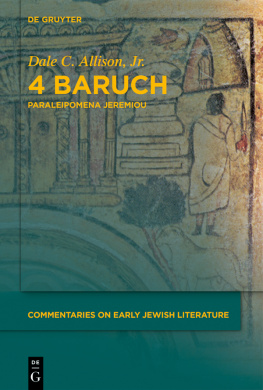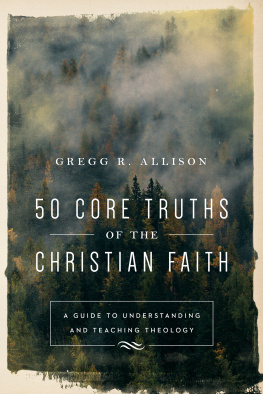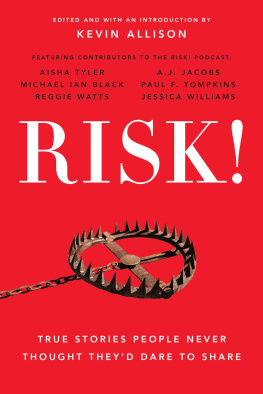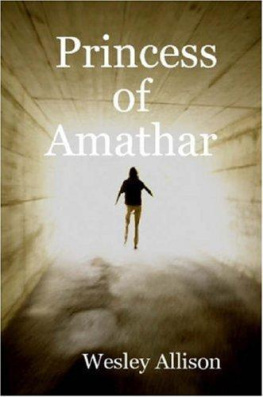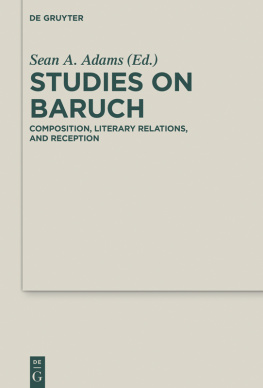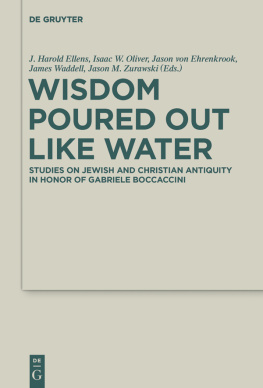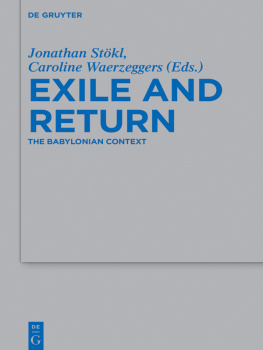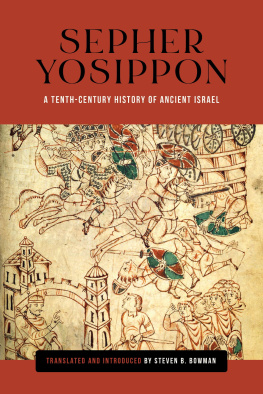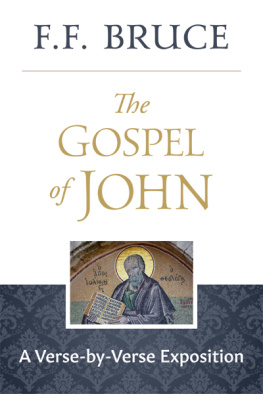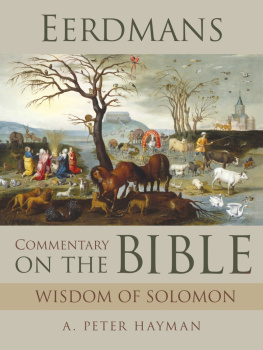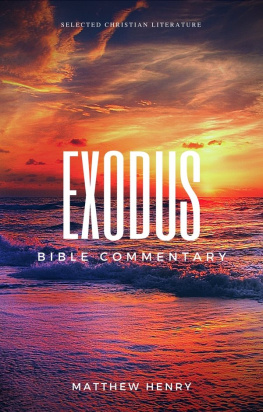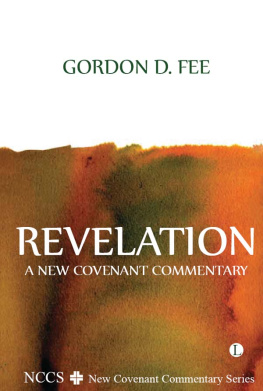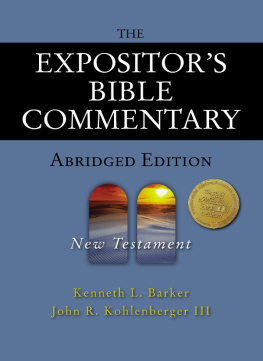Contents
Guide
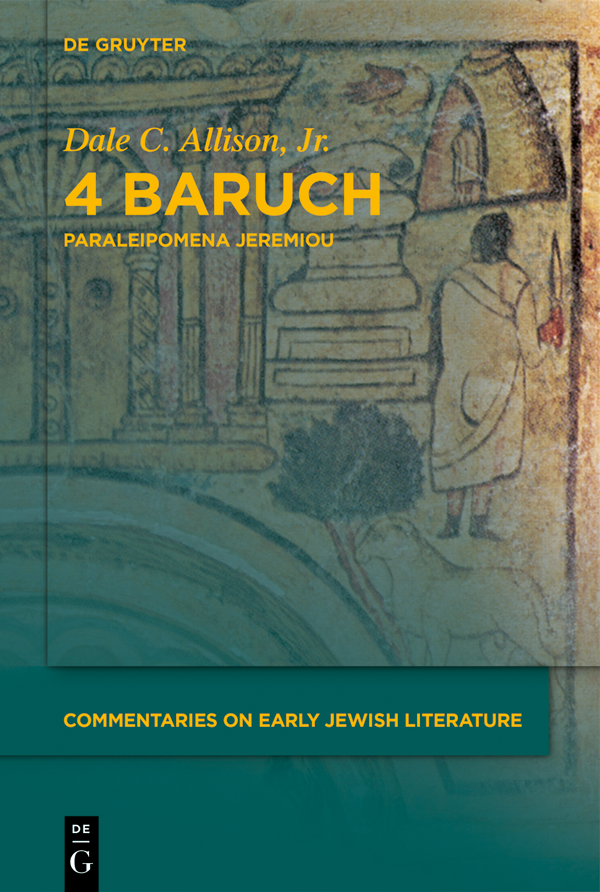
Dale C. Allison, Jr.
4 Baruch
Commentaries on Early Jewish Literature (CEJL)
Edited by
Loren T. Stuckenbruck
and
Pieter W. van der Horst Hermann Lichtenberger
Doron Mendels James R. Mueller
De Gruyter
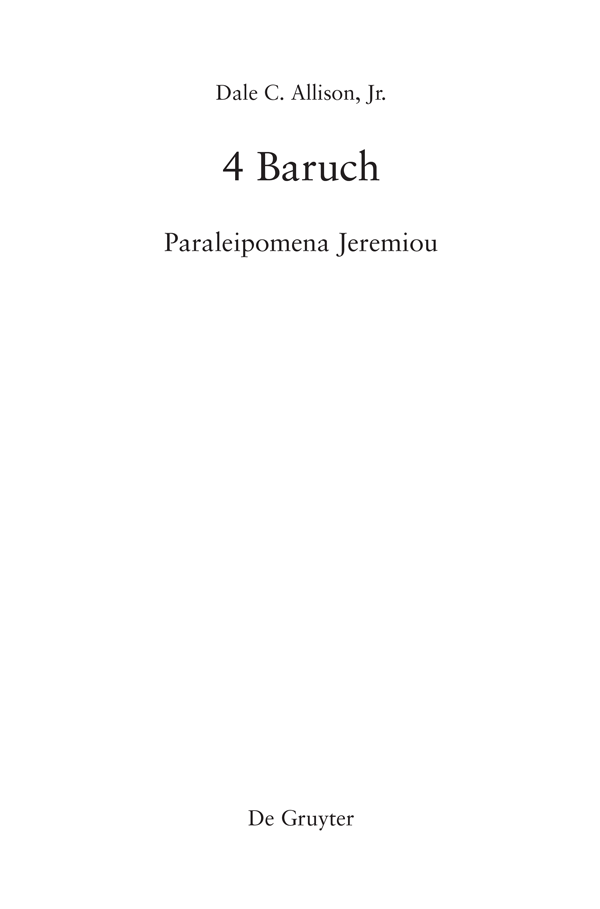
ISBN 978-3-11-026973-4
e-ISBN (PDF) 978-3-11-026980-2
e-ISBN (EPUB) 978-3-11-038548-9
ISSN 18616003
Library of Congress Cataloging-in-Publication Data
Names: Allison, Dale C., Jr., 1955- author.
Title: 4 Baruch (Paraleipomena Jeremiou) / Dale C. Allison.
Other titles: Four Baruch
Description: Berlin ; Boston : De Gruyter, [2018] | Series: Commentaries on early
Jewish literature | Includes bibliographical references and indexes.
Identifiers: LCCN 2018016482| ISBN 9783110269734 (print) | ISBN 9783110269802
(e-book : pdf) | ISBN 9783110385489 (e-book : epub)
Subjects: LCSH: Paralipomena Jeremiae--Commentaries.
Classification: LCC BS1830.P23+ | DDC 229/.913--dc23 LC record available at
https://lccn.loc.gov/2018016482
Bibliographic information published by the Deutsche Nationalbibliothek The Deutsche Nationalbibliothek lists this publication in the Deutsche Nationalbibliografie; detailed bibliographic data are available in the Internet at http://dnb.dnb.de.
2019 Walter de Gruyter GmbH, Berlin/Boston
www.degruyter.com
Preface
My first commentary for the CEJL series was on the Testament of Abraham. I so much enjoyed working on it that, after finishing, I asked the editor of the series, Loren Stuckenbruck, if I could contribute another volume to the series. Happily, no one had yet signed up for the Paraleipomena Jeremiou, so the task became mine. Once again, working outside of my usual area of research, the New Testament, has proven to be both pleasant and profitable.
When, many years ago in graduate school, I first read the Paraleipomena, in Jim Charlesworths class on the Pseudepigrapha, I assumed that it was Jewish. That assumption held the first time that, decades later, I taught the book in my own class on the Pseudepigrapha. But when, a few years after that, I returned to the book and worked through the Greek with PhD students, I began to have doubts. The Christian elements no longer seemed to me to be confined to the story of Jeremiahs vision and martyrdom in .
I wish to thank my student assistants, J. P. OConnor, James Neuman, and Theron Clay Mock, III, for their help with various tasks. I wish further to acknowledge the support of my colleagues in New Tesatment here at Princeton and, above all, my wifes constant loving encouragement and counsel. She is better than I deserve.
Abbreviations are those of the The SBL Handbook of Style (2 nd ed.; Atlanta: SBL Press, 2014).
Dale Allison
INTRODUCTION
I. Greek Texts and Versions
The Greek of the Paraleipomena Jeremiou has come down to us in two recensions, one long, one short. Two dozen mss. preserve the former.
Another participant in the unfinished project, Anni Hentschel, was able to sort the mss. of the long version into families and improve upon the three-fold classification of Kraft and Purinthun. Manuscripts U, P, O, R, and W make up a fourth cluster, J and X (the latter perhaps directly dependent upon J) a fifth. Y, N, and Z belong to a sixth textual tradition. I and M constitute the final group, one which Hentschel judges to be secondary and of little value.
The short form, when compared with the long form, turns
The long form of the Paraleipomena is well attested in Ethiopic mss., which descend from a translation of the Greek made between the 4 th and 7 th centuries.
The long form exists also in Armenian and goes back to at least the tenth century.
4 Baruch further circulated in Romanian and Slavic languages.
Given that the Wrzburg project did not reach its goal, we still do not have a standard critical edition of 4 Baruch based upon all the Greek and versional evidence. So the commentator can only judge the variants, in so far as they are available in Harris and other editions, on their individual merits. The text in this commentary is, accordingly, eclectic. The present commentary, moreover, does not offer a large textual apparatus. For that readers must consult the notes of Harris, Kraft and Purintun, Piovanelli, and Herzer. Remarks on the text herein are selective, the focus being largely on variant readings that (i) are especially difficult to adjudicate; (ii) affect significantly the sense of the text; (iii) highlight important discrepancies between the most important Greek witnesses and the Ethiopic; (iv) exemplify a tendency in the textual tradition; and/or (v) are of intrinsic interest.
II. Title and Genre
A. Title. Just as we do not know whether our book first appeared as a scroll or codex, so we do not know whether it initially came with a title or superscription. The title in Greek manuscripts A, B, C, and F is: . Nothing is claimed or implied about the author.
The Ethiopic names Baruch rather than Jeremiah: The Remainder ( tara-fa ) .
B. Genre. Harris and Goodenough label 4 Baruch an apocalypse.
The use, in the Greek tradition, of in connection with our book raises the possibility that it may have been intended as history of a sort, perhaps as a supplement to or clarification of the biblical narrative, along the lines of 12 Chronicles. Yet one wonders whether 4 Baruch contains enough clues for an ancient audience to have inferred that the narrator intended to relate edifying fictiona bit like a modern historical novel or docudramarather than recount the past.
Michael Chyutin has identified several criteria by which an educated Jewish audience in antiquity might have recognized an historical fable as by 1 Kings 16, which has King Omri founding and naming that city long before the exile, and it goes against Ezra and Nehemiah, which identify the Samarians with colonists imported by Esar-haddon, king of Assyria.
(ii) With respect to symbolic meaning, 6:37 explicitly states that the preservation of the basket of figs for sixty-six years is a sign of the eschatological resurrection of the flesh, and the same lesson is implicit in Abimelech waking up after having slept for decades. Again, the literal rest of Abimelech in 5:1 and 26 becomes a theological sign in 5:32: God is the rest of the souls of the just in every place. (iii) As for unnatural phenomena, 4 Baruch is full of miracles and, beyond that, contains fablesque elements, such as a talking eagle, a sixty-six year sleep, and the earth opening upon command to swallow sacred items. (iv) Concerning Chyutins fourth criterion, Babylon is, throughout our book, a cipher for Rome in the post-70 period; see on 2:7.
In addition to these reasons for ancient hearers or readers to judge, like modern historians, that 4 Baruch is fiction, there are the seemingly anach
This is not to say that 4 Baruch was never intended to be taken seriously as a deposit of religious instruction. Although it may be entertaining historical fiction, it also aims to edify, and it has strong didactic elements. In this it is akin to the Testament of Abraham, the Testament of Job, the Greek Life of Adam and Eve, Joseph and Asenath, and many haggadic legends of the rabbis. These are all scripturally-inspired didactic fiction.
One might wish, beyond this, to classify 4 Baruch as an example of so-called rewritten Bible or rewritten Scripture.

